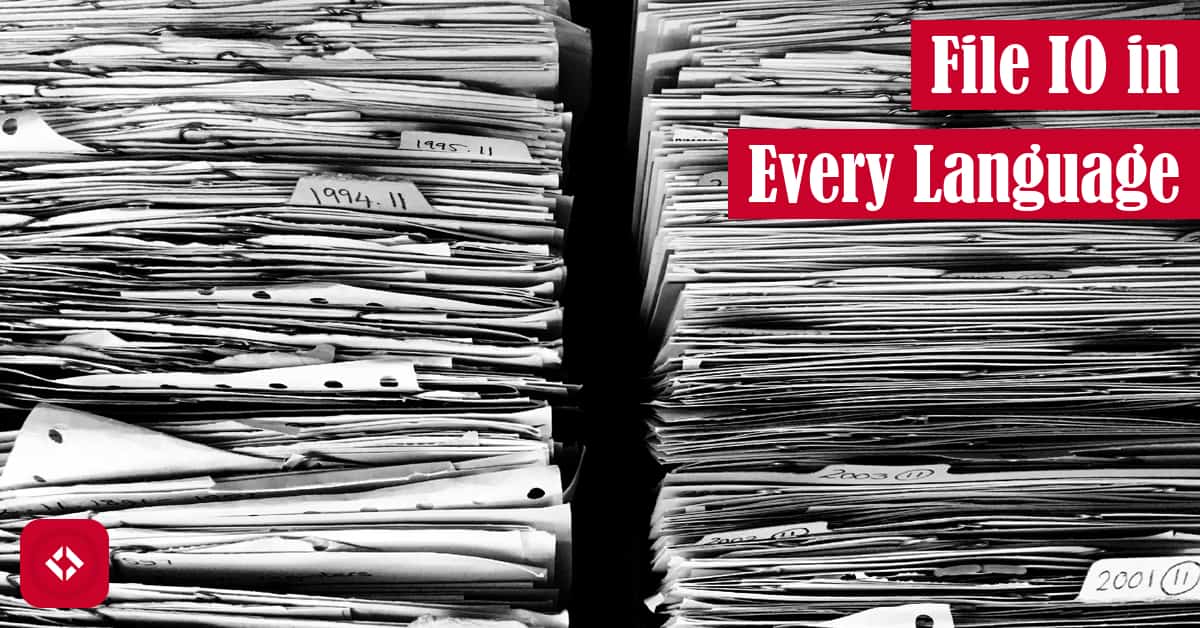Welcome to the start of another Sample Programs in Every Language series! Today, we’re kicking off File IO in Every Language, a series about file interaction.
Table of Contents
What is File IO?
For those who aren’t aware, IO is short for Input/Output. Append “File” to the front of that string to get a concept known as File IO: the basis of file reading and writing. In this series, we define File IO as any program which writes to a file and reads from that same file.
In particular, languages in this series should be able to write some arbitrary text to a file called output.txt, read that text back, and present it to the user. For example, let’s say the following text is what we want to write to a file:
This is a line of text.
And, this is another line of text.
Then, a File IO in Every Language program should write this text to output.txt, read the text back, and display it to the user like:
./file-io-program This is a line of text. And, this is another line of text.
To verify that the program worked, check that a file called output.txt has been created, and that it contains the text above. That’s it!
Why File IO in Every Language?
To be honest, I didn’t come up with this idea. One of our biggest contributors, Noah, did. As a result, I have them to thank for this awesome series. In fact, many of the programs in this series were implemented by Noah, so give them a shout out in the comments.
That said, File IO can be a very important part of any system. In fact, I do a bit of File IO for this site. Every image you see on The Renegade Coder was generated by a Python program that uses file IO to read images and create new ones.
that uses file IO to read images and create new ones.
In general, File IO can be useful in all sorts of automation. I’m sure a lot of people have written little scripts to eliminate some busy work from their jobs. I’ve done that. Why update a file every day when you can automatically update it with scripting?
My point is File IO is important, and I think it makes a great addition to the Sample Programs in Every Language series.
An Alphabetical List of Languages
As usual, here’s a list of articles organized alphabetically:
Once again, thanks for sticking around. If you’re enjoying this site, consider becoming a member . At least that way, you’ll be able to share your recommendations in the comments. At any rates, until next time!
. At least that way, you’ll be able to share your recommendations in the comments. At any rates, until next time!
Recent Posts
It's July 2024, and I have three chapters of my dissertation drafted! Two more and we'll be ready to defend.
In growing the Python concept map, I thought I'd take today to cover the concept of special methods as their called in the documentation. However, you may have heard them called magic methods or even...

